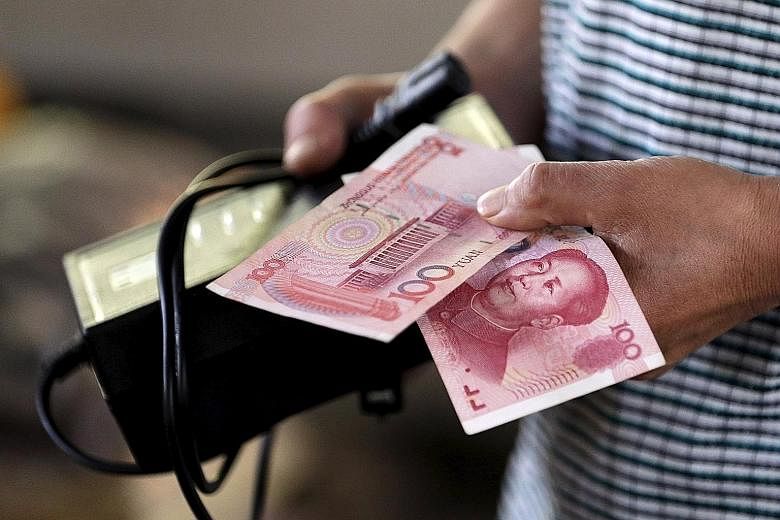It does not look like an easy start to the week for local stocks. Last week, the gloom began in Asia as investors continued selling off shares amid concerns that China's shock devaluation of the yuan signalled that the world's second largest economy was losing steam.
In Singapore, the rout eventually sent the benchmark Straits Times Index below the key 3,000 support level by Friday to close at 2,971.01, down 143.2 on the week.
The dark mood quickly spread to Europe and Wall Street, which ended up taking its harshest tumble in almost four years. By the end of the week, the Standard and Poor's 500 index had lost 5.8 per cent, its worst weekly slump since 2011.
If anything, this sets the stage for the already dour mood in Asia to sour further as markets open this morning.
After all, earlier concerns about China's growth have not dissipated. In fact, data out on Friday showed that output in China's manufacturing industry in the first three weeks this month contracted at the fastest pace since 2009, during the depths of the global financial crisis.
"Economic recovery seems to have lost steam further in August," HSBC analysts said in a research note on Friday.
"Both monetary and fiscal policymakers need to move more swiftly to demonstrate easing intention and anchor market expectations."
And China is not the only economy for investors to fret about.
As Moody's senior vice-president for credit policy Marie Diron wrote in a note last week: "The recovery in the United States and, to a lesser extent, the euro area and Japan, will be offset by the ongoing slowdown in China, low or negative growth in Latin America and only a gradual Russian recovery from its recession this year."
Growth in the euro zone tapered off from 0.4 per cent in the first quarter to 0.3 per cent in the second, dragged mainly by a surprise slowdown in France.
Regional currencies are also likely to keep coming under pressure as global punters flock to the safe haven of the US dollar. Just last week, the Singapore dollar hit multi-month lows against the euro and the Japanese yen, while all regional currencies, except the yen, depreciated against the greenback.
For some, the current volatility feels like a throwback to more dire economic times.
"It seems like we're seeing the makings of the 1997 Asian financial crisis all over, with emerging-market currencies plunging," CMC Markets strategist Nicholas Teo told Bloomberg News.
However, investors looking for the silver lining could look to Citi Research's latest report, which sings a more optimistic tune: "On balance, the effects of the Chinese developments on the rest of the world are likely to be complex but, by themselves, they will probably deliver only a modest drag on growth and inflation in the rest of the world."
This may be, for now, cold comfort to investors, who are likely to continue seeing regional markets awash in red for the coming days.
Singapore economic data to be released this week is not likely to hold any uplifting surprises either.
July's inflation data, out today, is likely to show a 0.5 per cent year-on-year fall in the headline consumer price index, predicts Citi economist Kit Wei Zheng, while industrial production data, out on Wednesday, will likely show a 3.8 per cent decline last month from the year before.

